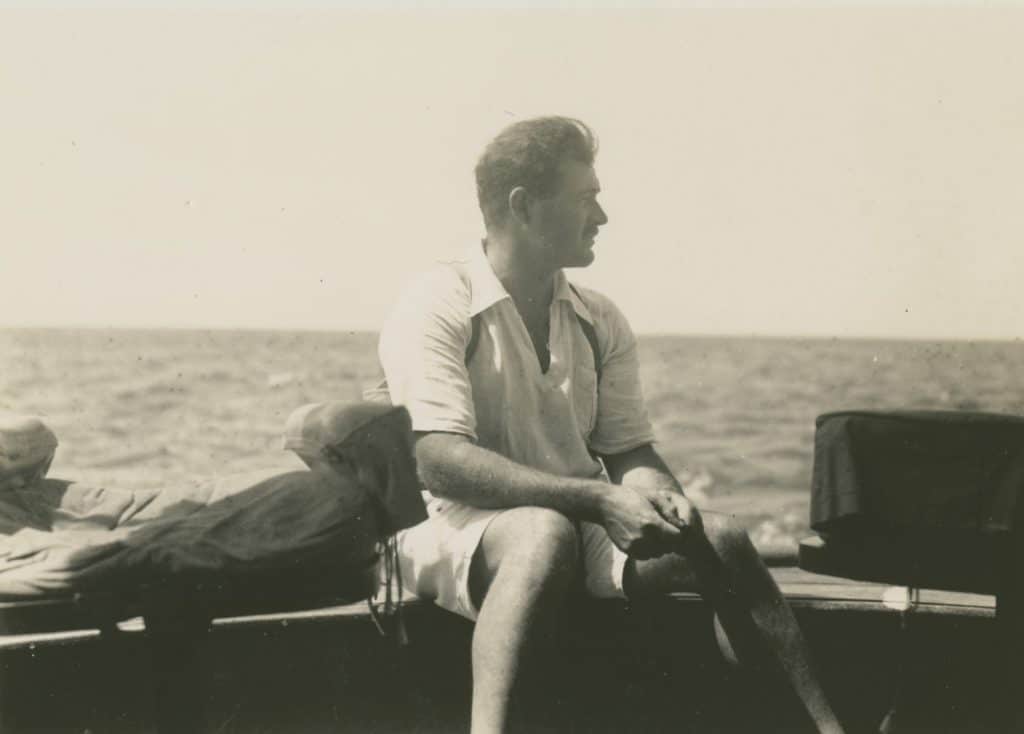Read also:
How to Watch FX Live Without CableHow To Watch AMC Without CableHow to Watch ABC Without CableHow to Watch Paramount Network Without CableKen Burns and Lynn Novick spend six enlightening hours interrogating the author’s famous machismo, his works, and his legacy.
There isn’t a lot of revelation to be found in Ken Burns & Lynn Novick’s extensive 3-part documentary on Ernest Hemingway. Those dads and grandpas tuning in will already be well-versed in his adventurous life, his tumultuous relationships, his legacy of violence, and self-aggrandizement. But Burns & Novick manage to put together a narrative that suits the author’s legendary machismo. If there’s one person who’d love Hemingway, it’s Hemingway.
Burns has lined up an all-star cast to voice the writer’s nearest and dearest, with Jeff Daniels taking the helm as the voice of Hemingway. A slew of famous actresses from Mary-Louise Parker to Meryl Streep serve as the voices of Hemingway’s wives through their correspondences.
If these tidbits achieve anything it’s putting Hemingway into the context of his time, and to highlight how much of a ruse his hyper-masculine lifestyle truly was. When his fourth wife, Mary, admits that her husband liked to reverse roles in bed, it feels like more of a confirmation than a revelation. If there is anything that all the boxing, bullfighting, and big game hunting telegraph, it’s that Hemingway felt something inside of himself that he needed to overcompensate for.

Hemingway is—or maybe was—a towering figure in America’s literary history, and for decades served as both a rebuke to the flowery literary style of the 19th century and a monolith of the American ethos. Hemingway might not have invented the strong, silent hero, but he certainly refined the archetype in a way that reflected his own life, his PTSD after being injured in WWI, his family history of mental illness, his resentment towards his mother (did that information really surprise anyone?).
Burns and Novick attempt to peel the layers of this onion and reveal the man behind the mythos he created for himself, but the two are so inextricably intertwined that it’s impossible to tell what was the real Hemingway and what was the facade, ironic considering Hemingway’s slavish devotion to the concept of truth, of writing through lived experience.
The talking heads in the early part of the documentary smile indulgently as they talk about Hemingway’s “tall tales” while we the viewer see them for what they really were—lies and exaggerations. Ask yourself if we would let Kazuo Ishiguro or Lousie Gluck get away with that nowadays. (Show of hands, who thinks Hemingway would have loathed the internet?)
One fascinating aspect of Hemingway would be hearing the criticisms of his work at the time of their publication. He did such a good job of building this hyper-masculine image of himself, of the harsh beauty of his own work, that seeing it panned by critics as sentimental navel-gazing is surprising. Less surprising is how hard Hemingway took this criticism, internalizing his own failings until his only release valve was terrorizing the people who loved him.
Burns & Novick’s documentary more solidly cements Hemingway’s flaws as his legacy, rather than his talent.
It would be pointless to try to gloss over the author’s well-documented history of alcoholism, infidelity, and spousal abuse. But it would be nice if those fine literary scholars and writers winced half as hard when discussing his violence towards women as they do at his use of racial epithets. And while his actions were often despicable, that Hemingway was a tortured soul is beyond doubt.
Hemingway’s best moments are those which expose the man’s vulnerabilities, his chronic insecurity, and mental illness. The sheer number of head injuries recorded is staggering, and by the end of the leisurely six hours, it’s impossible not to pity the man who was so often the architect of his own misery.
In the end, Burns & Novick’s documentary more solidly cements Hemingway’s flaws as his legacy, rather than his talent. He might have perpetuated the standard of American exceptionalism, but Hemingway’s work is too much a product of its time (with the possible exception of A Farewell to Arms and A Moveable Feast) to have much relevance today, despite its beautifully spare way of connecting the self to the natural world.
In a new century, in a new millennium, it’s more and more difficult to separate art from the artist. Does Hemingway—or his work—deserve a place in the pantheon of literary modernism? Burns’s documentary leaves that for you to decide.
Hemingway is currently playing on PBS.